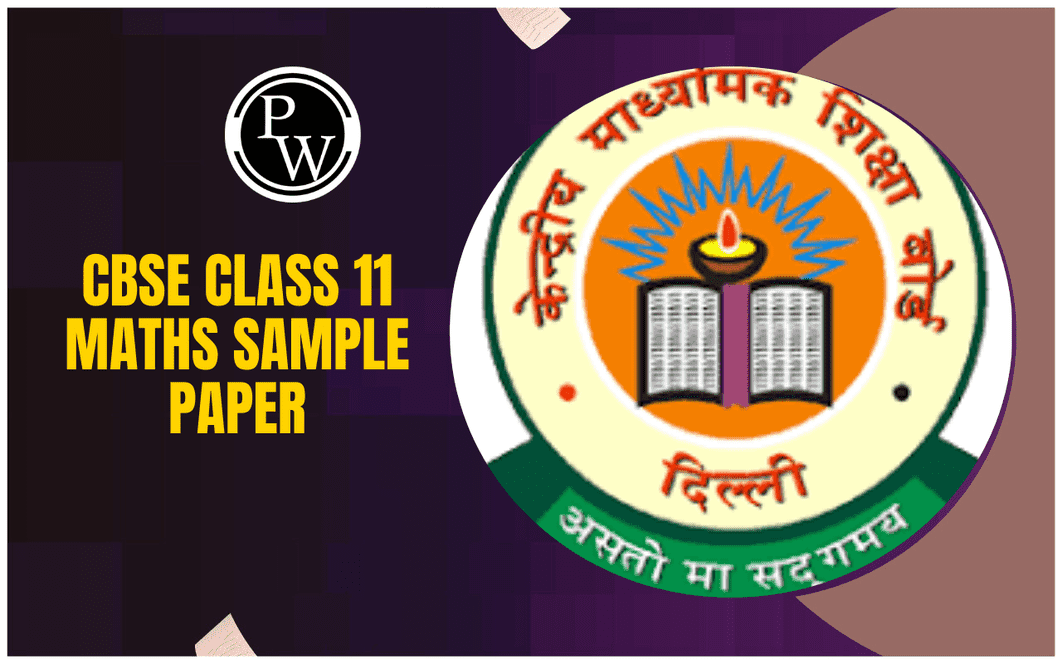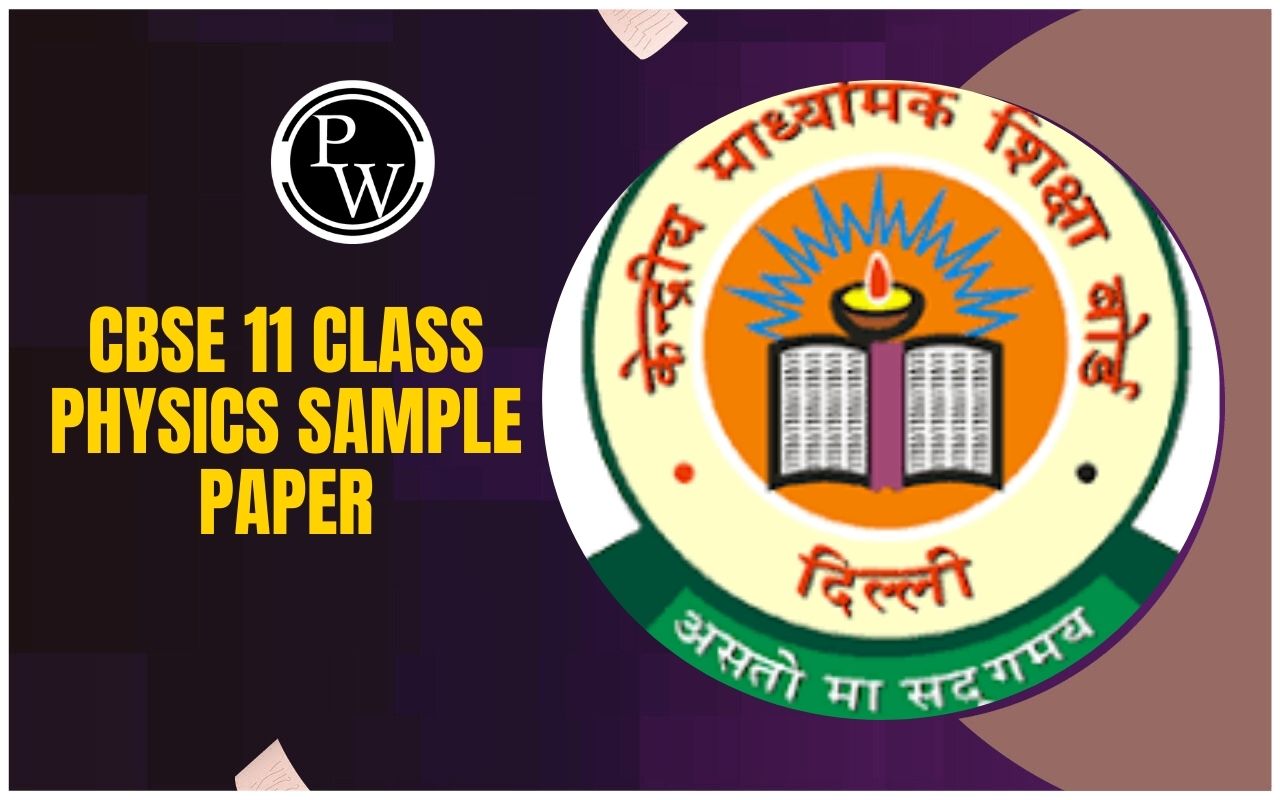
Important Questions for Class 11 Physics Chapter 4: Chapter 4, "Laws of Motion," in Class 11 Physics, focusses on the basic ideas that explain object motion. It presents Newton's three laws of motion: the first, known as inertia, which states that unless an outside force acts upon an object, it will remain at rest or move uniformly; the second, which establishes a relationship between force, mass, and acceleration (F = ma); and the third, which asserts that every action has an equal and opposite reaction.
To provide the groundwork for future mechanical research, the chapter also discusses ideas like friction, circular motion, and the practical applications of these laws.Important Questions for Class 11 Physics Chapter 4 Overview
Class 11 Physics Chapter 4, "Law of Motion," is crucial as it forms the foundation for understanding mechanics. The key questions in this chapter typically focus on Newton's three laws of motion, their applications in real-life scenarios, concepts like inertia, momentum, and force, as well as the relationship between mass, acceleration, and force. Understanding these principles is vital for solving problems related to motion, such as free-body diagrams and collision analysis. This chapter's concepts are also essential for higher-level physics and engineering courses, making it a cornerstone in the study of classical mechanics and a key to competitive exams.Important Questions for Class 11 Physics Chapter 4 PDF
Below, we have provided important questions for Class 11 Physics Chapter 4 - Law of Motion. These questions are designed to help you grasp the key concepts of Newton’s laws of motion, inertia, friction, and force. Practicing these questions will strengthen your understanding and improve your problem-solving skills, ensuring a solid foundation for upcoming exams and related topics in Physics.Important Questions for Class 11 Physics Chapter 4 PDF
Important Questions for Class 11 Physics Chapter 4 Law of Motion
Below is the Important Questions for Class 11 Physics Chapter 4 Law of Motion -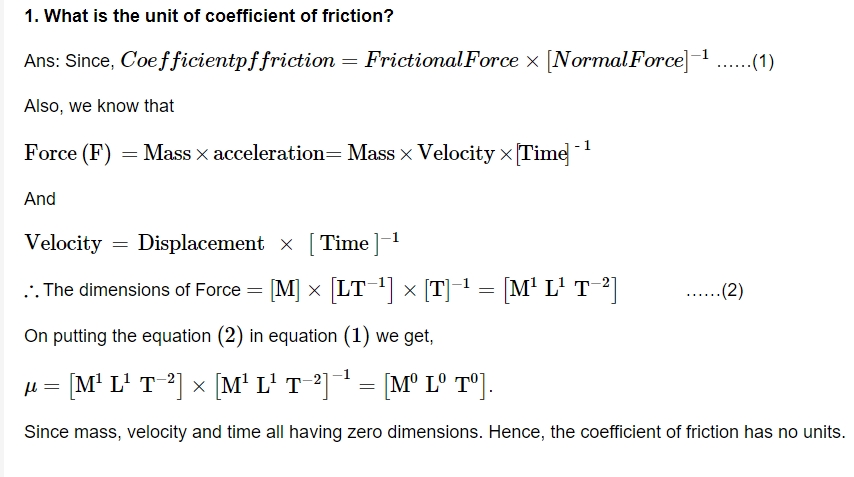
2. Name the factor on which coefficient of friction depends?
Ans: The coefficient of friction will mainly depends upon two factor, they are as following:
- The materials of the surfaces in contact.
- The characteristics of the surfaces.
3. What provides the centripetal force to a car taking a turn on a level road?
Ans: The frictional contact between the tyres and the road provides centripetal force.
4. Why is it desired to hold a gun tight to one's shoulder when it is being fired?
Ans. The gun must be held gently on the shoulder as it recoils after firing. The back kick will be lessened because the pistol and shoulder are one mass system in this instance. When shooting, a shooter must hold his weapon firmly against his shoulder.5. Why does a swimmer push the water backwards?
Ans: We know that "when one body exerts a force on the other body, the first body experiences a force equivalent in magnitude in the opposite direction of the force exerted" because of Newton's third law of motion. Consequently, the swimmer uses his hands to push water backward in order to swim ahead.
6. Friction is a self-adjusting force. Justify.
Ans: Friction is a self-adjusting force that changes in magnitude from zero to maximum to limit friction.
7. A thief jumps from the roof of a house with a box of weight W W on his head. What will be the weight of the box as experienced by the thief during jump?
Ans: The thief is in free fall during the jump. Both he/she and the box will be weightless during that time. So, the weight of the box experience by the thief during the jump will be zero.
So, mathematically it can be written as:
Weight of the box, W = m(g - a) = m(g - g) = 0.
8. Which of the following is scalar quantity? Inertia, force and linear momentum.
Ans: Inertia is a measure of a body's resistance to its own acceleration. Mass thus turns into a qualitative measure of inertia. linear inertia is a scalar quantity since mass is a scalar number. The scalar quantity among them will therefore be inertia.
9. Action and reaction forces do not balance each other. Why?
Ans: Action and reaction do not balance one another since a force of action and response always acts on two different bodies.
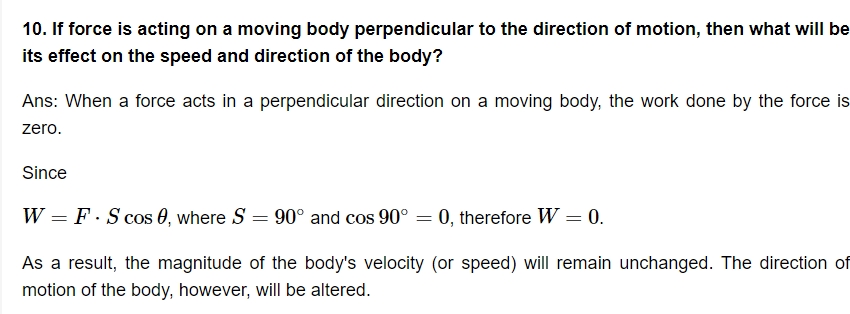
11. The two ends of spring - balance are pulled each by a force of 10kg.wt. What will be the reading of the balance?
Ans:
The spring balancing measures weight because it is dependent on the spring's tension. Now, if a 10 kg weight is pulled on both ends, the tension and reading will both be 10 kg.12. A lift is accelerated upward. Will the apparent weight of a person inside the lift increase, decrease or remain the same relative to its real weight? If the lift is going with uniform speed, then?
Ans: The perceived weight is going to rise. If the lift travels at a steady pace, the apparent weight will remain the same as the true weight.
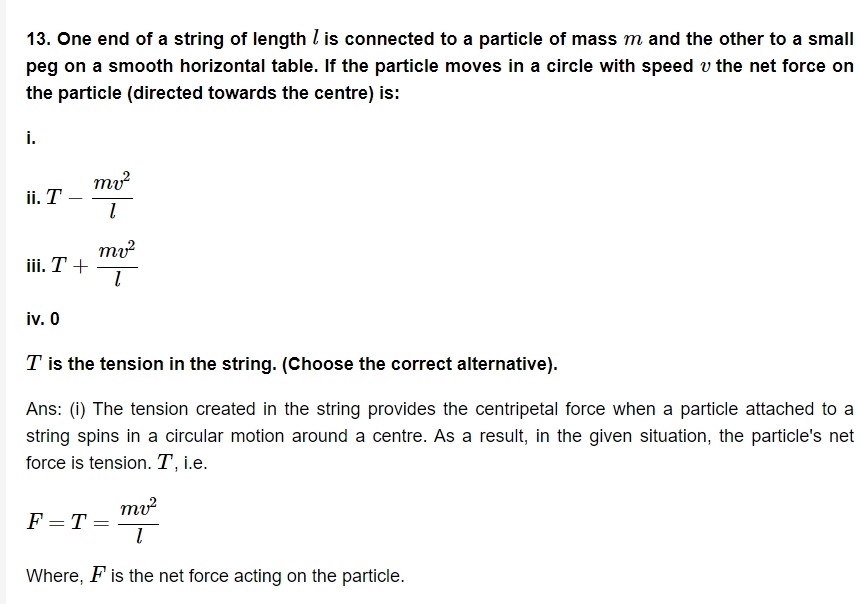
2 Mark Questions
1. Give the magnitude and direction of the net force acting on
(a) A drop of rain falling down with constant speed.
(b) A kite skillfully held stationary in the sky.
Ans:
(a) The raindrop's acceleration will be zero because it is falling at a constant pace. Since a particle's force is determined by, the raindrop's net force will be zero. (b) Newton's first law of motion states that the algebraic sum of the forces operating on the kite is zero since it is held motionless. 2. Two blocks of masses m 1 , m 2 are connected by light spring on a smooth horizontal surface. The two masses are pulled apart and then released. Prove that the ratio of their acceleration is inversely proportional to their masses.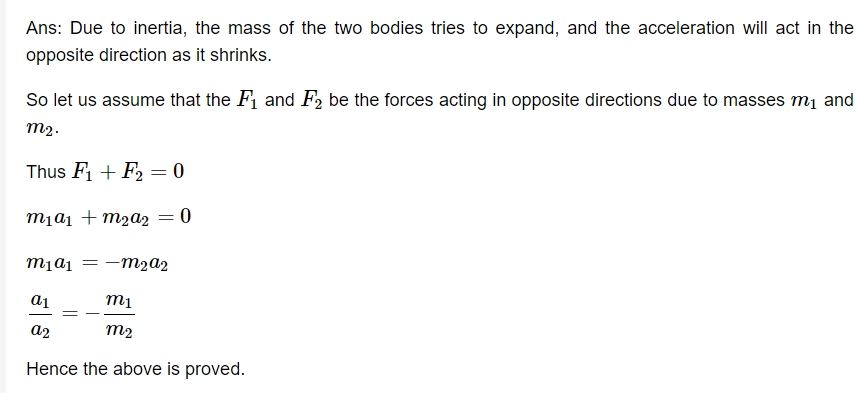 3. A shell of mass 0.020 kg is fired by a gun of mass 100 kg. If the muzzle speed of the shell is
80ms,
what is the recoil speed of the gun?
3. A shell of mass 0.020 kg is fired by a gun of mass 100 kg. If the muzzle speed of the shell is
80ms,
what is the recoil speed of the gun?
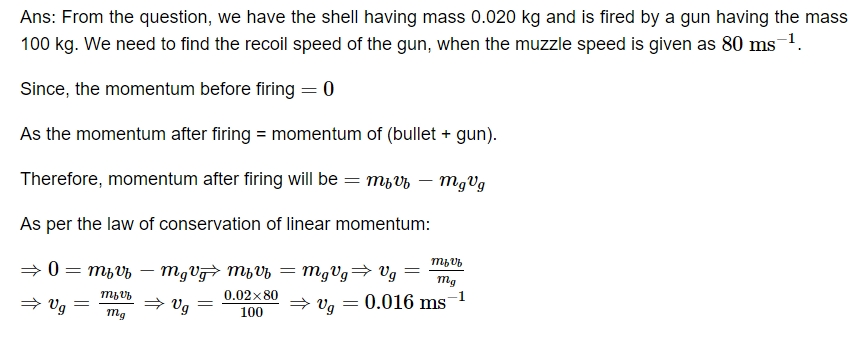
4. A force is being applied on a body but it causes no acceleration. What possibilities may be considered to explain the observation?
Ans: (1) If the force is a deforming force, no acceleration is produced.
(2) Internal force is incapable of causing acceleration.
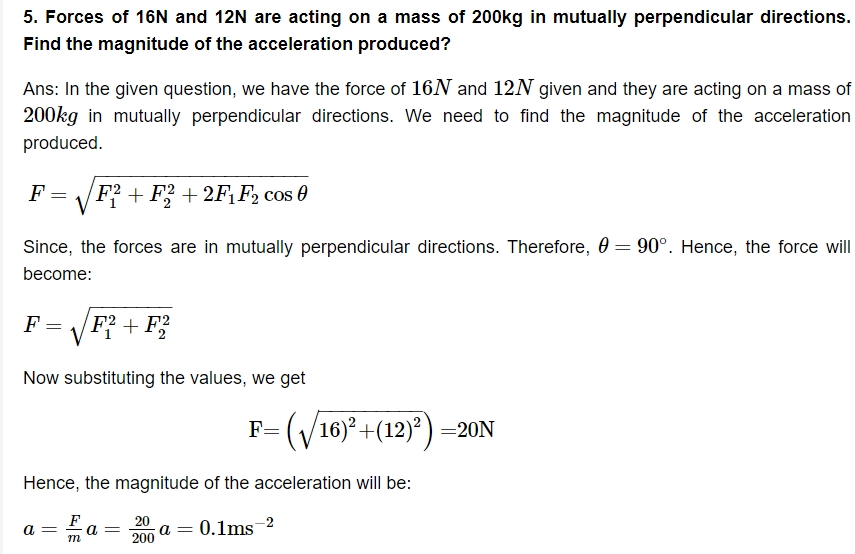
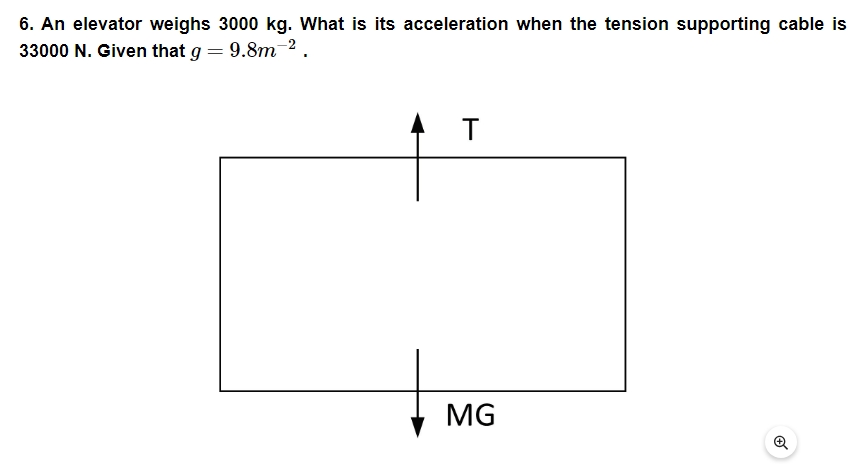
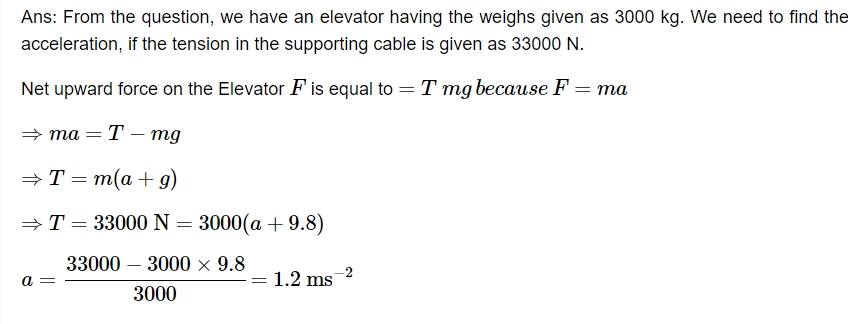
3 Mark Questions
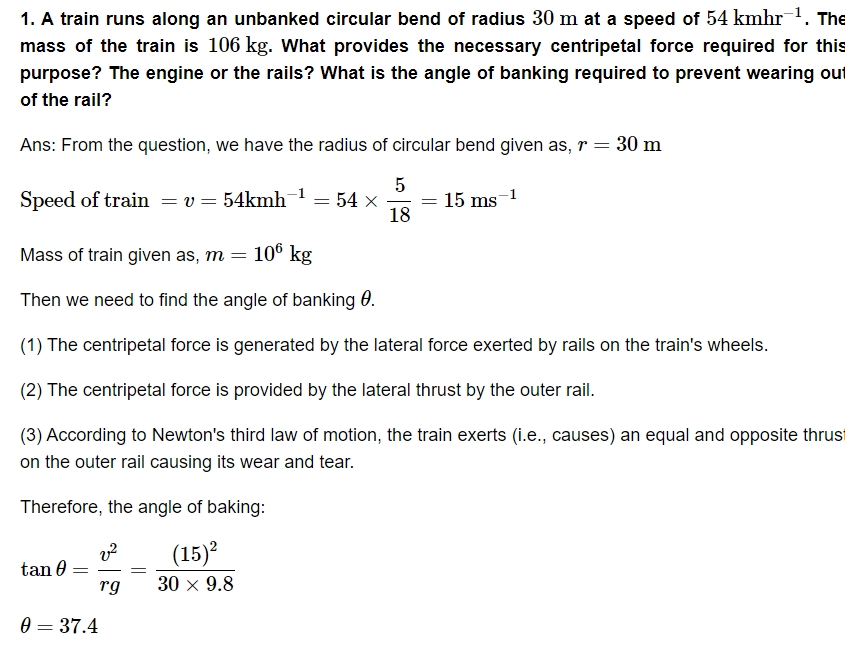
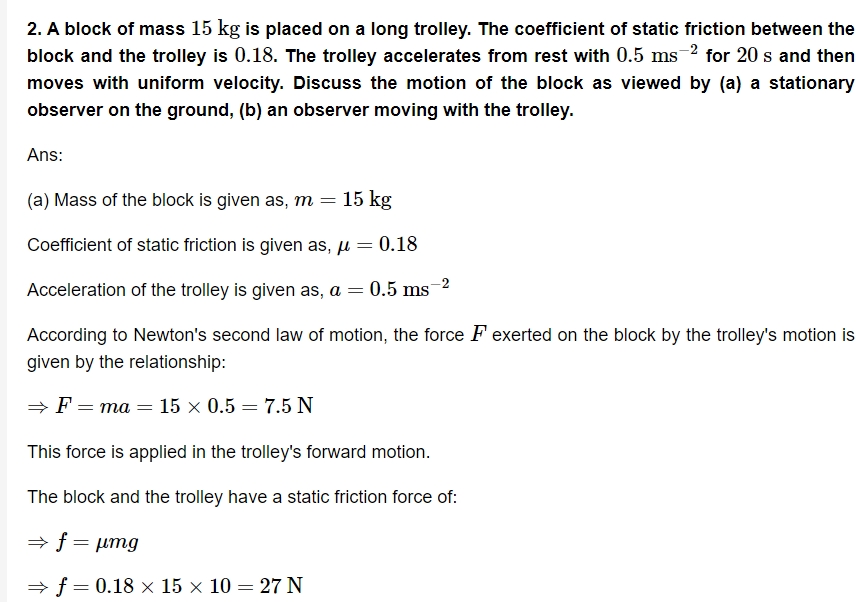 The static friction force between the block and the tram is less than the applied external force. A ground observer will therefore perceive the block as being at rest.
The tram will travel at a steady speed without any external force being exerted. Friction is the only force affecting the block in this instance.
(b) A spectator feels some acceleration as they go with the tram. This circumstance has a non-inertial frame of reference. The frictional force pulling the tram backward is opposed by a fake force of equal magnitude. In contrast, this force acts in the opposing direction. The tram will appear to be at rest to the observer moving with it.
The static friction force between the block and the tram is less than the applied external force. A ground observer will therefore perceive the block as being at rest.
The tram will travel at a steady speed without any external force being exerted. Friction is the only force affecting the block in this instance.
(b) A spectator feels some acceleration as they go with the tram. This circumstance has a non-inertial frame of reference. The frictional force pulling the tram backward is opposed by a fake force of equal magnitude. In contrast, this force acts in the opposing direction. The tram will appear to be at rest to the observer moving with it.
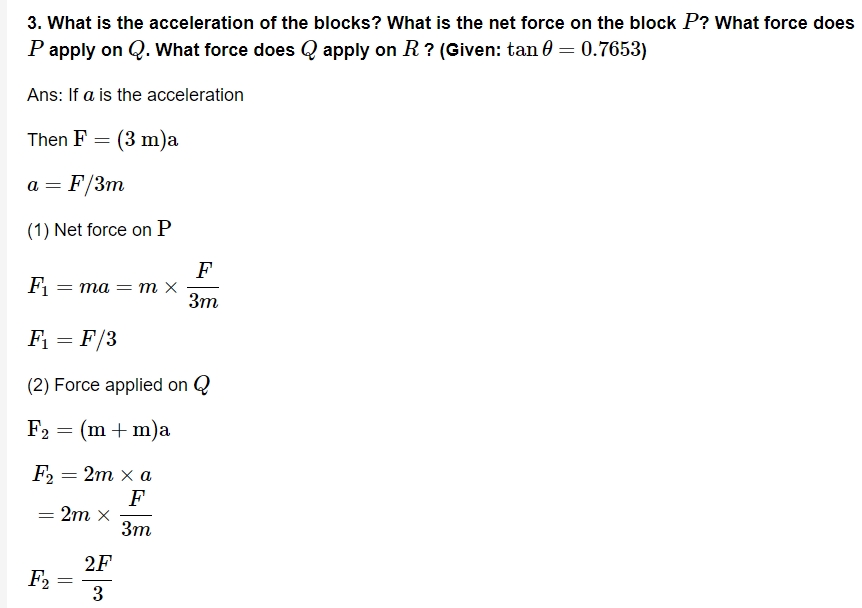
4. How is centripetal force provided in case of the following?
(i) Motion of planet around the sun,
(ii) Motion of moon around the earth.
(iii) Motion of an electron around the nucleus in an atom.
Ans:
(i) The centripetal force is provided by the gravitational force acting on the earth and the sun.
(ii) Centripetal force is provided by the earth's gravitational attraction on the moon.
(iii) The centripetal force is provided by the electrostatic attraction between the electron and the proton.
Benefits of Using Important Questions for Class 11 Physics Chapter 4
Using important questions for Class 11 Physics Chapter 4, "Laws of Motion," offers several benefits, especially for students preparing for exams and enhancing their understanding of the concepts. Here are the key advantages:Concept Clarity :
Important questions are often curated to focus on the core concepts and principles of the chapter, helping students gain a deeper understanding of topics like Newton's Laws, free-body diagrams, and friction.Exam-Focused Preparation :
These questions are typically aligned with exam patterns, including frequently asked and high-weightage questions. This ensures students are well-prepared for tests and competitive exams.Application-Oriented Learning :
The questions emphasize applying theoretical knowledge to solve practical problems, which enhances problem-solving skills and analytical thinking.Time Management :
Practicing important questions helps students gauge the time required to solve problems during exams, allowing them to improve their speed and efficiency.Better Retention :
Revisiting these questions frequently reinforces key concepts, making it easier for students to recall and apply them in exams.Variety of Problems :
Important questions often include a mix of conceptual, numerical, and application-based problems, ensuring comprehensive coverage of the chapter.Important Questions for Class 11 Physics Chapter 4 FAQs
What is the best law of motion?
What is Newton's first law called?
What is Newton's second law called?
How is the first law of motion derived?



